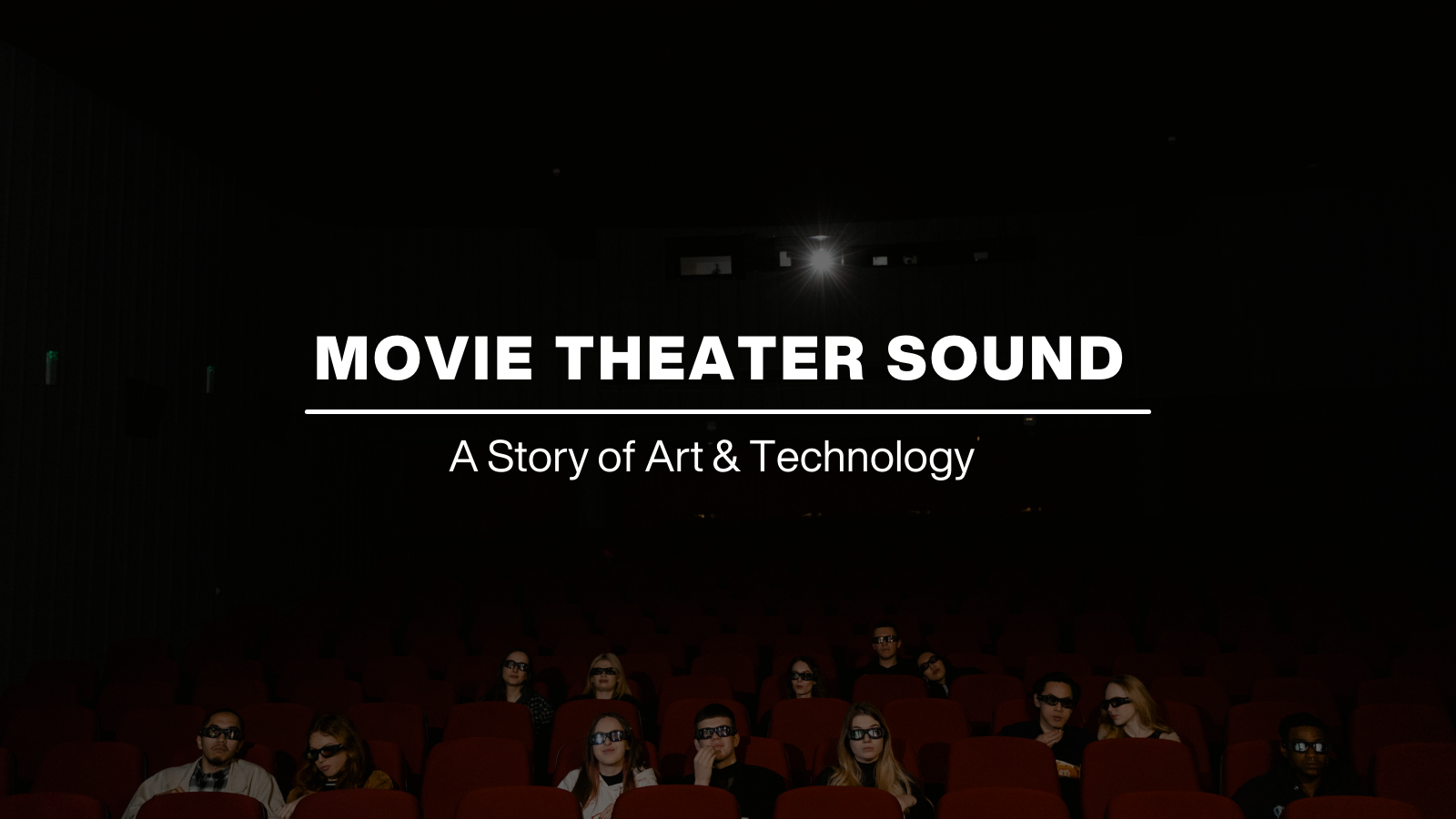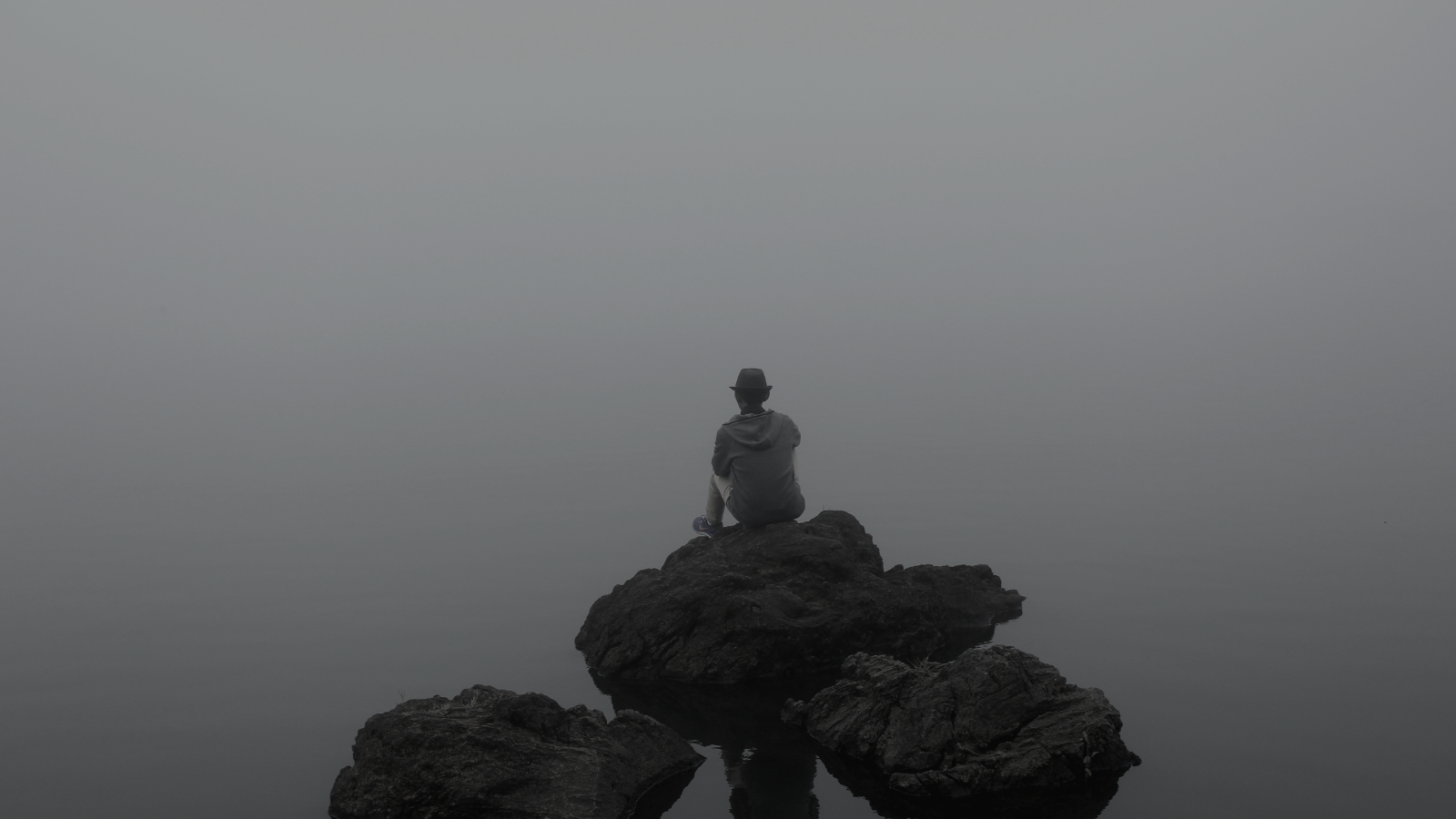by Lindsay Eager
Art & Technology
The history of sound in movie theaters is actually the story of a relationship between technology and art. Movies would be created and technology would be developed to enhance the presentation of the movie; a new technological breakthrough would change the way filmmakers shot their films. Beautiful scores were composed to make up for a lack of spoken dialogue in movies. Sound effects became an entire sub-industry with its own tricks and machinery and audience expectations. Movie theaters became standardized, with studios requiring certain technology and protocols before they’d allow their films to be shone.
And like many other technological advancements, we have Thomas Edison to thank for kicking off its development.
Synchronization
The first problem was synchronization. Music and sounds could be recorded but keeping them perfectly synchronized with the projected film was nearly impossible. Edison had already patented the Phonograph in 1888, which recorded and played back sound etched into wax cylinders. He developed a coin-operated machine called the Kinetophone—this married the pre-recorded sounds of a Phonograph with the projected film strip on a Kinetoscope.
In 1894, a Kinetophone parlor opened in New York City. Five of these “peep-show” machines were open to the public, and the public enjoyed them. They were short films, only three or four minutes long.
One of these original Kinetophone films was restored in 1998—it shows a man playing a violin into a phonograph recording horn while two other men waltz around and goof off behind him. It’s very fun and light-hearted and worth a watch.
Edison believed the future of movies would be in coin-operated machines for individual consumption, not in mass projections for audiences to watch together. To be fair, there were plenty of problems with sound projection—there was no amplification system beyond a phonograph’s horn, and it was too easy to lose the sync if a record skipped a groove.
Other inventors tried to solve these projection problems. At the Paris World’s Fair in 1900, three different phonograph sync devices were displayed to use in movie theaters—the Phonorama, the Chronophone, and the Phono Cinema Theatre. But all of these proved to have issues maintaining the sync between the film projection and the sound. And still, there was no way to amplify the volume to be loud enough for an entire audience to hear.
Live Music (or Amplification)
Over the next twenty years after Edison’s first sound/film experiments, movies became a prime source of cheap entertainment for the public. The coin-operated movie machines (sometimes called nickelodeons) gave way to movie palaces, and in 1915, most of these large, grand theaters hired live orchestras to accompany the films and provide sound effects. Many directors or studios commissioned special scores to match the films they’d created.
However, only the biggest theaters could afford this kind of grand accompaniment. Smaller venues used pianists, which was still a large expense. To cut the costs of live musicians, effort was put towards developing the technology for pre-recorded music—and this time, producers were attempting to put the audio onto the film strip itself.
In 1919, three German inventors patented a process which converted audio waves into electricity, which was then converted into light. When played back after it was recorded, the light would be converted back into electricity and into sound. This solved the syncing issue for sound in films, but there was still the problem of amplification.
Radio broadcast technology added new possibilities to movie theater sound amplification. In 1906, Dr. Lee Deforest patented the audion tube, an electronic device that amplified small signals—this became the foundation for radio broadcasting and long-distance telephone calls, and by 1922, Deforest created the Deforest Phonofilm company, producing a series of short films. By 1924, 34 theaters on the East Coast had been wired for Phonofilm sound.
This technology inspired producers to make and show over one thousand new films over the next four years—from vaudeville acts to stand-up comedians to speeches by Calvin Coolidge, audience watched and listened to these short films in movie theaters all over the East Coast.
Hollywood, however, wasn’t impressed. Deforest offered his Phonofilm technology to west coast movie studios, but as far as they were concerned, the sound-in-films trend was just that—a trend. They had built an entire industry around silent films and were uninterested in switching over to “talkies…” except for one studio.
One Studio
In 1926, Warner Bros., using disc technology developed by Western and Bell Electric Company and funding from Goldman Sachs, established the Vitaphone corporation. Their goal was to lease this technology to other studios, and interestingly, they never envisioned the technology being used for dialogue onscreen. It was always meant to be for synchronizing musical accompaniment.
To demonstrate Vitaphone’s capabilities, Warner Bros launched a three million dollar premiere at Warner Theater in New York City in 1926. This was also one of the first theaters to feature air conditioning—a “refrigerated theater,” as it was called. The film shown was called Don Juan, starring renowned actor John Barrymore and with a recorded score performed by the New York Philharmonic. It was a huge critical and financial success. Warner Bros toured the movie—and the new sound system—all around the United States and Europe. Yet other movie studios were still unconvinced about the future of sound.
Hollywood did not root for synchronized, prerecorded sound—it was still seen as only a novelty. But Warner Bros was so certain this would be the way films were headed. They built the first sound studio in the late 1920s. They also signed an agreement, along with several other studios, producers, and Hollywood moguls, that should an industry-wide conversion to sound take place, they would all adopt a single, standardized sound system. This was called the Big Five agreement.
A major turning point for Hollywood was the 1927 film The Jazz Singer. This was originally produced to be a silent film with musical accompaniment, but actor Al Jolson improvised several lines, and they were included in the production as part of the story. This was also the beginning of a new style of acting and storytelling on film—instead of actors using exaggerated movements and silent film cards to explain the dialogue and other details, actors would now develop a new, realistic form of acting. Emotions were replicated and conveyed to the audiences. Motions were subtle. Verisimilitude was the goal.
The Jazz Singer did so well, it finally toppled the industry into the new kind of movie entertainment: films with synchronized, prerecorded sound, including dialogue, music, and sound effects. By 1928, every major movie theater in the country was wired for sound. By 1929, 75% of films produced were talkies.
Over $300 million dollars was spent converting the industry to this new technology, most of it borrowed from Wall Street. Rockefeller and JP Morgan were among the lenders who invested in this change, and the investment paid off handsomely. Audiences couldn’t get enough. They came out to see every new movie—the movie industry survived the Great Depression in part because they’d converted to sound at the right moment. Those major investments into the sound technology wouldn’t have been available after the crash.
The next major innovation in movie theater sound technology happened because of the advent of television.

Competing in the Television Era
For most of the 1930s, 40s, and 50s, movies were produced in what is called the “studio era” of Hollywood. Films of every genre were made—lavish musicals, feature animations, slapstick comedies, romantic screwballs, horror. Films featured eerie soundtracks, voice acting, realistic sound effects, incredible and witty dialogue.
But when television became a household staple in the early 1950s, movie theater attendance dropped by 50%. People preferred to stay at home and watch their favorite shows rather than head out to the movie theater… so movie theaters had to figure out a reason to get their potential customers out of the house. They had to create something that customers couldn’t get with their own home television sets.
Many new features were introduced to theaters, including widescreen projections, huge screens, stereoscopic 3D, and multitrack sound. The goal was to create an experience with every movie, an immersive feeling. Disney’s 1940 film Fantasia was the first movie with a multi-channel sound format, and its success kicked off a series of advancements in theater experience: Cinerama, a bold new widescreen system, angled screens to envelope the audience and bring them into the picture, seven audio channels, speakers placed all around the theater for surround sound, dual channels.
The magnetic strips of audio track were not sustainable for most movie theaters. Over time, the strips wore down, resulting in iron oxide that flaked off into the projectors and started fires. Studios experimented with other sound technology, but the Academy of Motion Pictures and Sciences insisted on consistency—major movie theaters could afford better sound, smaller theaters couldn’t keep up with the newest technology rollouts. The Academy announced a standardized frequency setup, so even with the worst sound systems, the sound editors could at least know how to calibrate their audio.
A major issue with all these multitrack audio recordings was a high range hiss, a horrible static noise that came from dormant channels and often masked the current audio tracks. A sound engineer named Ray Dolby came up with a solution—by splitting the input signal and applying compression, he could reduce the ambient noise. Dolby’s system became a standard in the newer systems of the 1970s.
Dolby has introduced many updated systems in the last forty years, including a special system unveiled by 1977’s Star Wars: A New Hope. Inspired by these achievements in sound design, George Lucas developed an official quality assurance system for movie theaters: THX certification. Movie theaters who passed the criteria for reverberation, pink noise, and sound system technology could show off their THX certification before the movie began.
Digital sound has once again revolutionized the way sound is recorded, mixed, and delivered for films. Currently, cinemas that are rigged for digital audio are able to present the audio in sixteen different channels—it’s also notable that new developments happen almost yearly now, and much of the sound engineering is done on a project-by-project basis.
Also notable? No matter the sound setup, most cinema engineers agree that the best place to sit for maximum audio experience is in the center of the theater about two-thirds back. Hopefully the next time you watch the Academy Awards and feel tempted to skip past all the sound design awards, you’ll be able to understand why those categories were created in the first place.
Read more by this author The Sound of Creative Limitations or Look to the Juggalos
--------
Lindsay Eagar is the author of several novels for children and adults, including HOUR OF THE BEES and most recently THE PATRON THIEF OF BREAD. She lives in the mountains of Utah with her husband and their two daughters.






Share:
Crawling in the Crescent City
The Road to Sambhar Salt Lake, Rajasthan